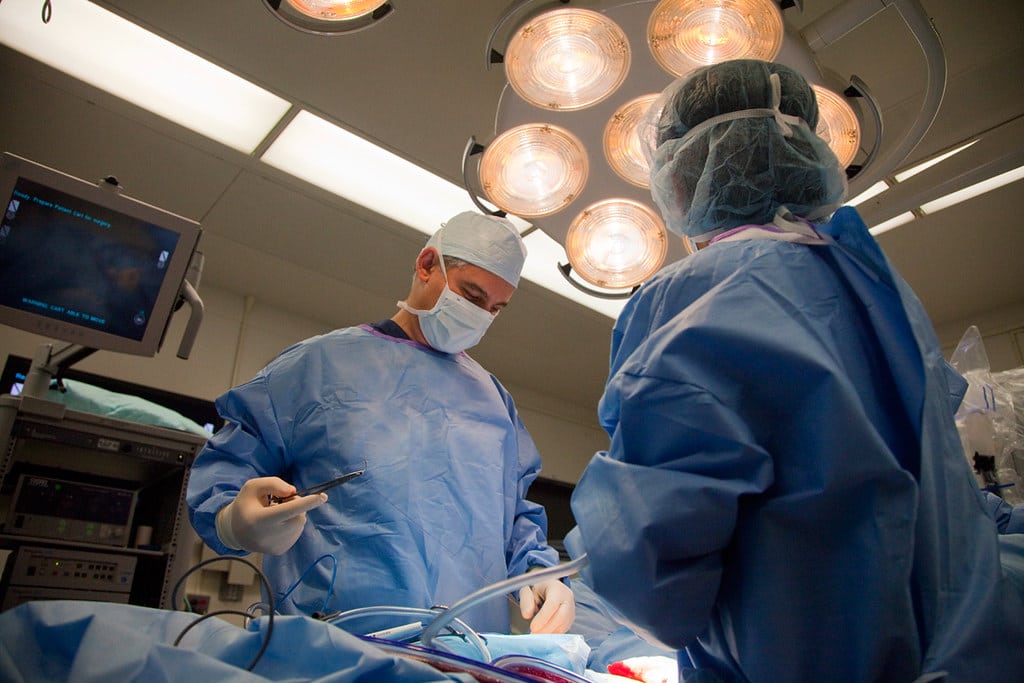Dr. David Samadi has been at the forefront of revolutionizing prostate cancer treatment through robotic-assisted prostatectomy. This minimally invasive procedure utilizes a state-of-the-art robotic surgical system, offering patients a safer and more efficient way to remove cancerous prostates while preserving delicate nerves and muscles. This article explores the intricacies of robotic-assisted prostatectomy, its benefits, patient criteria, and long-term considerations.
Robotic-Assisted Prostatectomy Process
Like traditional laparoscopic procedures, robotic-assisted prostatectomy involves a specially trained surgeon operating precision-guided robotic arms from a console in the operating room. These robotic arms provide enhanced precision, flexibility, and a full 360-degree range of motion. A small video camera captures magnified 3-D images of the prostate site through keyhole-sized incisions, facilitating a comprehensive view of nerve bundles and surrounding muscles.
This innovative approach results in smaller incisions, reduced blood loss, and accelerated postoperative recovery. Dr. Samadi performs numerous robotic-assisted prostatectomies monthly, using the advanced da Vinci® computer-enhanced surgery system.
Patient Benefits
Patients undergoing robotic-assisted prostatectomy typically experience less pain, reduced blood loss, and faster recovery times compared to those undergoing conventional open incision procedures. The surgery, which includes the removal of the prostate, seminal vesicles, and ends of the vas deferens, is associated with a shorter hospital stay, usually one night, and a discharge as soon as laboratory tests, pain control, and liquid retention are deemed acceptable. Additionally, the procedure offers promising outcomes for potency, with recovery times as short as 2-3 weeks.
Patient Criteria
While nearly all patients diagnosed with localized prostate cancer have the option of choosing robotic-assisted surgery, certain factors, such as significant abdominal adhesions or obesity, may make some individuals inappropriate candidates for this procedure. Dr. Samadi will thoroughly discuss treatment options with each patient, helping them make informed decisions based on their unique circumstances.
Reduced Blood Loss Explained
The precision and less disruptive dissection facilitated by robotic equipment contribute to a more controlled surgical process, reducing potential sources of bleeding. The use of gas to inflate the abdomen during surgery also plays a role, providing surgeons with an enhanced and expansive view of the operating area around the prostate.
Risks and Considerations
All major surgeries have the possibility of health risks to the patient. All men will have a thorough assessment before the surgery, helping evaluate their overall health. The primary risks of a robotic prostatectomy is temporary impotence and incontinence. Dr. Samadi will discuss with each patient so they have a thorough understanding to facilitate their decision-making process.
Postoperative Care
Upon discharge, patients are provided with a specialized catheter, typically removed during an outpatient visit 5-7 days post-surgery. Men with concerns related to urinary continence and potency will be offered insights into the timeline and factors affecting these aspects of recovery.
Long-Term Follow-up
Monitoring for cancer recurrence is crucial, and patients may require additional treatments based on pathology reports. Every man must know the importance of a postoperative action plan, including periodic blood PSA measurements, as a critical indicator of cancer recurrence.
In conclusion, robotic-assisted prostatectomy represents a cutting-edge approach to prostate cancer treatment, offering patients improved outcomes and a faster return to normalcy. As advancements in medical technology continue, this minimally invasive procedure stands as a testament to Dr. Samadi’s commitment to providing innovative and effective solutions for patients battling prostate cancer.
Dr. David Samadi is the Director of Men’s Health and Urologic Oncology at St. Francis Hospital in Long Island. He’s a renowned and highly successful board certified Urologic Oncologist Expert and Robotic Surgeon in New York City, regarded as one of the leading prostate surgeons in the U.S., with a vast expertise in prostate cancer treatment and Robotic-Assisted Laparoscopic Prostatectomy. Dr. Samadi is a medical contributor to NewsMax TV and is also the author of The Ultimate MANual, Dr. Samadi’s Guide to Men’s Health and Wellness, available online both on Amazon and Barnes & Noble. Visit Dr. Samadi’s websites at robotic oncolo gy and prostate cancer 911.


